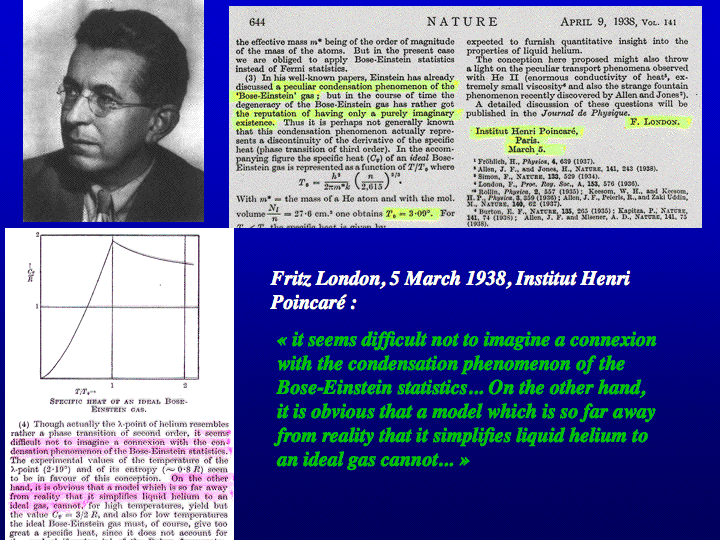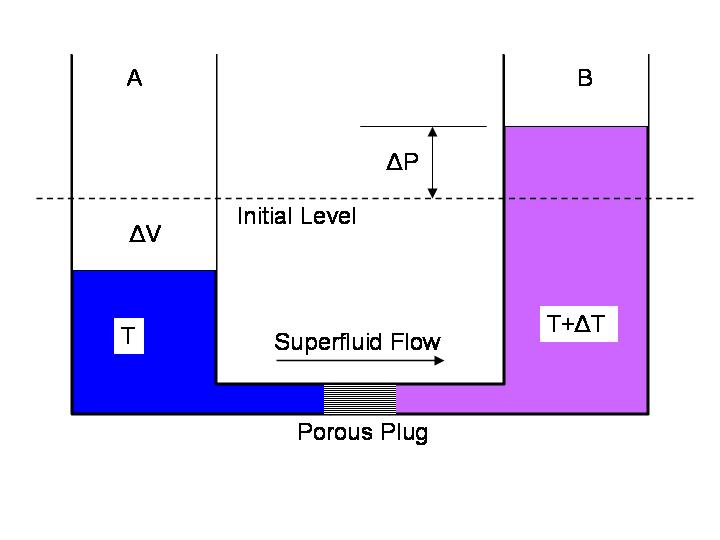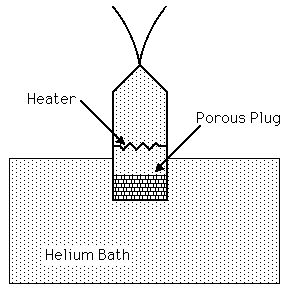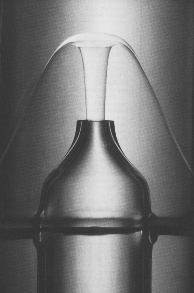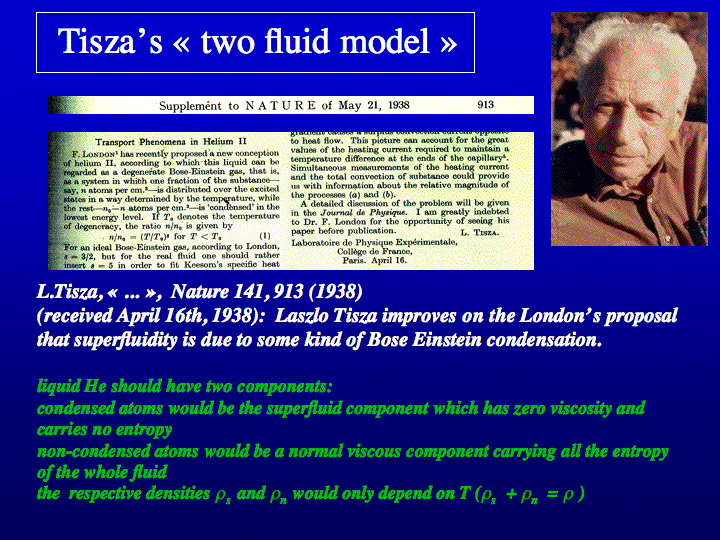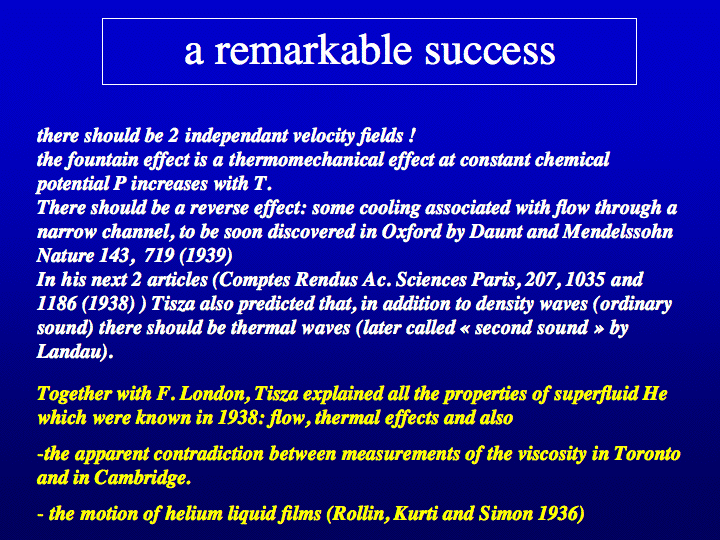Superfluid Helium
-
Helium stays fluid down to T=0°K, since
- The van der Waals attraction between helium atoms is weak (closed
electronic shells)
- Quantum fluctuations are large (light mass)
- Phase diagram of helium:
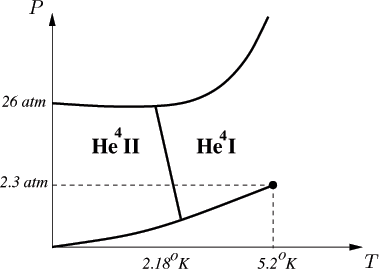
- The isotope He4 (but not He3) undergoes a phase transition
to a new state at T=2.18°K
- In evaporative cooling boiling stops, and He-II is a quiscent
-
-
Some unusual properties of He-II:
- The puzzle of its viscosity:
- It flows through the finest capillaries with no apparent
resistance
- There is a finite drag of fluid in torsional experiments
(Keesom, Andronikashvilli)
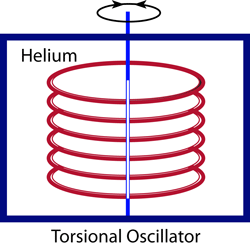

- Thermo-mechanical couplings:
- No boiling bubbles
- Heating of a pressurized compartment in the superflow experiment
- The fountain effect
-
Is superfluidity related to Bose-Einstein Condensation
(BEC)? (Fritz London, 1938)
-
- It does not occur in the fermionic isotope of He3
- The predicted BEC transition temperature of Tc=3.13°K
at the density of helium is not far off.
- Lazlo Tisza's two fluid model can explain the thermo-mechanical
effects.
- Key differences of helium superfluidity and BEC:
- Interactions: He-II is a practically incompressible liquid due
to hard-core interactions, while the ideal BEC has no compressibility!
- Differences in the heat-capacity curves:
- There is a λ-like logarithmic divergence in heat capacity,
as opposed to the finite hump in BEC
- Heat capacity vanishes as T^{3} at low temperatures,
as opposed to T^{3/2} for
BEC
- Differences in the superfluid fraction:
- The superfluid fraction not vanish linearly at the transition
point
- The normal fraction does not vanish as T^{3/2} at
zero temperature
- There can be no superfluidity if the spectrum of excitations scales
quadratically in momentum [cf Kelvin waves excited by wind on water]
- These differences can be accounted for by the Landau spectrum of
elementary excitations (phonons+rotons)
- In closing:
8.333 Superfluid Helium



